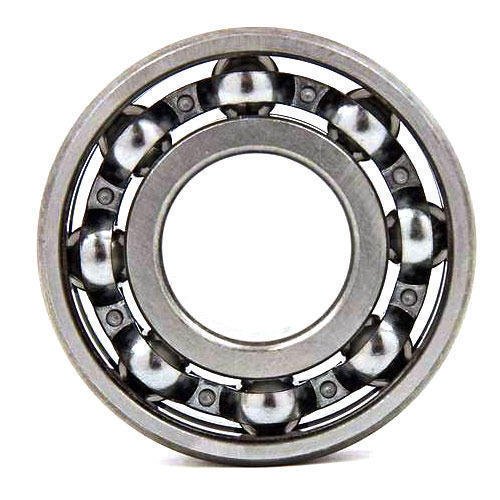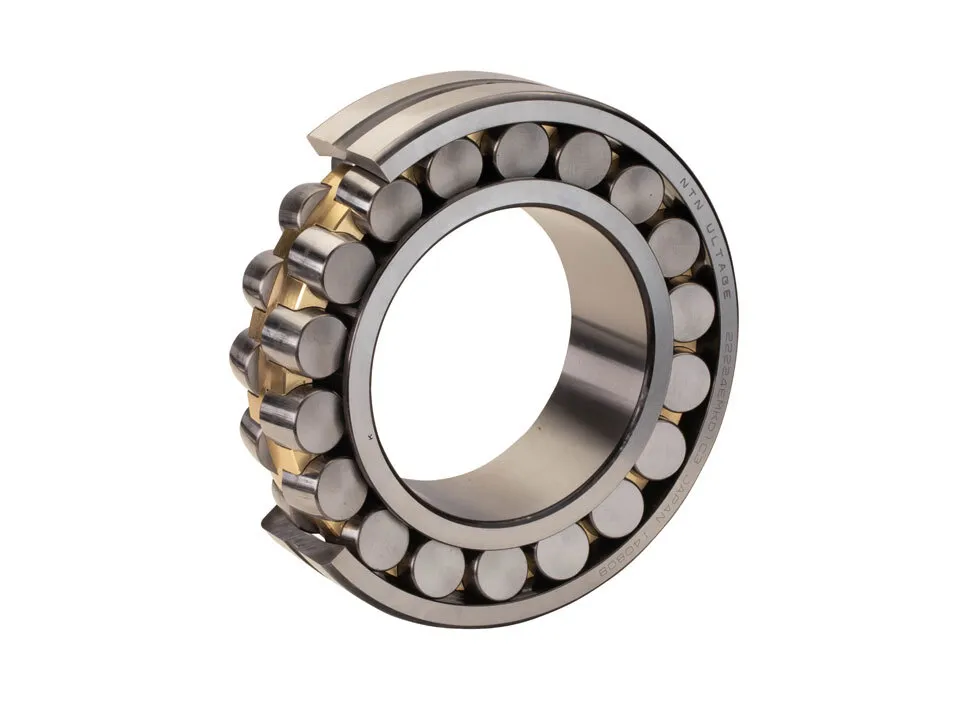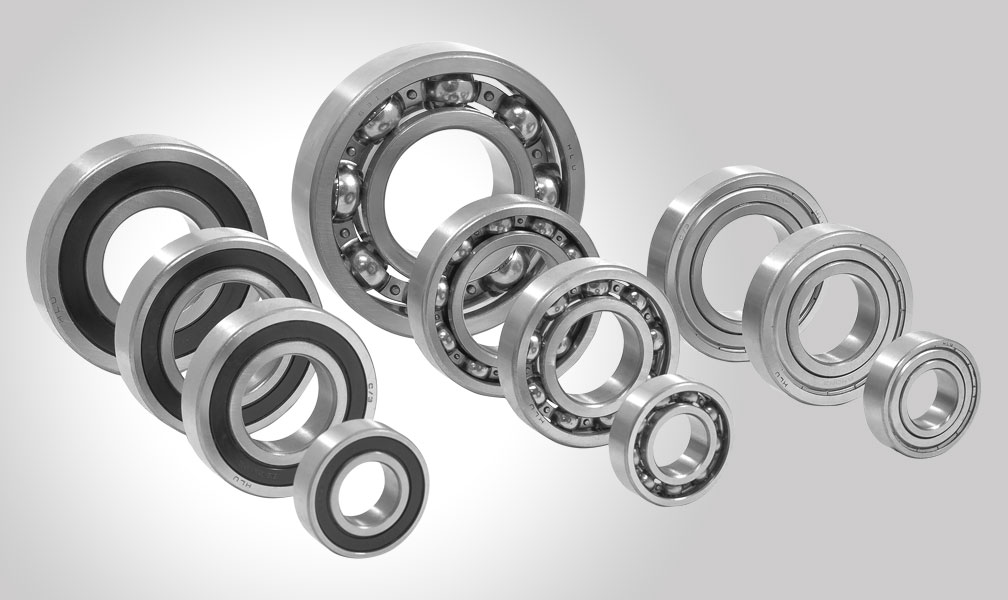Product Description
Single Row Radial Miniature Bearing 624ZZ 624-2Z 624-2RS1 4 mm ID x 13 mm OD x 5 mm Wide
HOJE offers a comprehensive range of Angular contact Thrust self-aligning deep groove ball bearings, which are available in:
– Single row and double row
– Open and sealed types
– Contact angle of 15, 30, or 40 degree
– Chrome steel, ceramic or hybrid materials
– Polyamide, steel, and brass cage assemblies
– 6000 series: 604.605.606.607.608.609.6000.6001.6002.6003.6004.6005.6006.6007.6008.6009.6571.6011.6012
– 6200 series: 624.625.626.627.628.629.6200.6201.6202.6203.6204.6205.6206.6207.6208.6209.6210.6211.6212
– 6300 series:634.635.636.637.638.639.6300.6301.6302.6303.6304.6305.6306.6307.6308.6309.6310.6311.6312
– 6400 series:6403.6404.6405.6406.6407.6408.6409.6410.6411.6412.6413.6414.6415.6416.6417.6418.6419.6420
– 6700 series:673.674.675.676.677.678.679.6700.6701.6702.6703.6704.6705
– 6800 series:685.686.687.688.689.6800.6801.6802.6803.6804.6805.6806.6807.6808.6809.6810.6811.6812
– 6900 series:695.696.697.698.699.6900.6901.6902.6903.6904.6905.6906.6907.6908.6909.6910.6911.6912
– 16000 series:16001.16002.16003.16004.16005.16006.16007.16008.16009.16571.16011.16012.16013.16014
– 51101 51102 51103 51104 51105 51106 51107 51108 51109 51110 51111 51112 51113 51114 51115 51116
– 51200 51203 51204 51205 51206 51207 51207 51208 51209 51210 51211 51212 51213 51214 51215 51216
– 51305 51306 51307 51308 51309 51310 51311 51312 51313 51314 51315 51315 51316 51317 51318 51320
| Product Name | NSK CZPT CZPT CZPT CZPT ASAHI FBJ HOJE ball and roller bearings |
| Material | Stainless steel, Gcr15, carbon steel |
| Precision Grade | P0 P6 P5 P4 P2 are all available |
| Hardness | Hrc60-65 |
| Cage | Steel, Nylon |
| Structure | Double row |
| Service | OEM, Customized |
| Applications | Cars, trucks, and trailer bearings are widely used in cars, trucks, and trailers of various transmission / rotating members. |
| Special Properties | 1. High precision |
| 2. Low noise | |
| 3. long life | |
| 4. Can be customized according to your needs | |
| 5. Can provide small & miniature standard and non-standard bearings. |
Detailed Photos
Our Advantages
Company Advantages
1. FREE SAMPLES: contact us by email or trade manager, and we will send the free samples according to your request.
2. World-Class Bearing: We provide our customers with all types of bearing with world-class quality.
3. OEM or Non-Stand Bearings: Any requirement for Non-standard bearings is Easily Fulfilled by us due to our vast knowledge and links in the industry.
4. Genuine products With Excellent Quality: Company has always proved the 100% quality products it provides with genuine intent.
5. After Sales Service and Technical Assistance: Company provides after-sales service and technical assistance as per the customer’s requirements and needs.
6. Quick Delivery: The company provides just-in-time delivery with its streamlined supply chain.
7. Cost Saving: We provide long-life, shock-resistant, and high-reliability bearings with excellent quality and better performance. Resulting in increased cost savings.
8. Attending customer queries promptly: We believe that if customers is satisfied then it proves our worth well. Customers are always given quick support.
Packaging & Shipping
Packaging
1)Commercial Bearings packaging: 1pc/plastic bag + color box + carton + pallet
2)Industrial Bearings packaging
3)According to the requirement of customers
Payment
1) T/T:30% deposit, 70% should be paid before shipment.
2) L/C at sight. (high bank charge, not suggested, but acceptable )
3) 100% Western Union in advance. (especially for air shipment or small amounts)
Delivery
1) Less than 45 KGS, we will send by express. ( Door to Door, Convenient )
2) Between 45 – 200 KGS, we will send by air transport. ( Fastest and safest, but expensive )
3) More than 200 KGS, we will send by sea. ( Cheapest, but long time )
/* March 10, 2571 17:59:20 */!function(){function s(e,r){var a,o={};try{e&&e.split(“,”).forEach(function(e,t){e&&(a=e.match(/(.*?):(.*)$/))&&1
| Contact Angle: | 15° |
|---|---|
| Aligning: | Non-Aligning Bearing |
| Separated: | Unseparated |
| Samples: |
US$ 1/Piece
1 Piece(Min.Order) | Order Sample |
|---|
| Customization: |
Available
| Customized Request |
|---|
.shipping-cost-tm .tm-status-off{background: none;padding:0;color: #1470cc}
| Shipping Cost:
Estimated freight per unit. |
about shipping cost and estimated delivery time. |
|---|
| Payment Method: |
|
|---|---|
|
Initial Payment Full Payment |
| Currency: | US$ |
|---|
| Return&refunds: | You can apply for a refund up to 30 days after receipt of the products. |
|---|
What are radial bearings, and how are they used in mechanical applications?
Radial bearings are a type of rolling element bearing used in mechanical applications to support radial loads. They are designed to primarily handle forces that are perpendicular to the shaft’s axis, known as radial loads, although they can also withstand limited axial (thrust) loads. Radial bearings are widely used in various mechanical systems where rotational motion is involved. Here is a detailed explanation of radial bearings and their applications:
1. Structure and Components:
Radial bearings consist of several key components. The inner ring is mounted on the rotating shaft, while the outer ring remains stationary. Between the inner and outer rings, there are rolling elements, such as steel balls or cylindrical rollers. These rolling elements are evenly spaced and held in position by a cage or retainer, which prevents their contact and ensures smooth rolling motion. The inner and outer rings, along with the rolling elements and cage, work together to support and distribute the load applied to the bearing.
2. Radial Load Support:
The primary function of radial bearings is to support radial loads. Radial loads are forces that act perpendicular to the shaft’s axis, such as the weight of a rotating shaft or the force exerted by a belt or pulley system. Radial bearings are designed to distribute these loads evenly across the rolling elements, minimizing friction and allowing smooth rotation. The rolling elements roll between the inner and outer rings, absorbing and transmitting the radial load to the stationary outer ring, which then transfers the load to the surrounding structure.
3. Axial Load Capacity:
While radial bearings are primarily designed to support radial loads, they can also withstand limited axial (thrust) loads. Axial loads are forces that act parallel to the shaft’s axis, such as the force generated by a thrusting or pushing motion. The axial load capacity of radial bearings is lower compared to dedicated thrust bearings, but they can handle moderate axial loads that may be present in certain applications. It is important to consider the axial load capacity of the specific radial bearing when selecting it for a mechanical application.
4. Versatility and Wide Range of Applications:
Radial bearings are versatile and find applications in a wide range of mechanical systems. They are commonly used in machinery and equipment such as electric motors, pumps, fans, conveyors, automotive components, and industrial machinery. Radial bearings are crucial for providing support and facilitating smooth rotation in these applications. They are able to handle various operating conditions, speeds, and loads, making them suitable for both light-duty and heavy-duty applications.
5. Different Types of Radial Bearings:
There are different types of radial bearings available to suit different application requirements. Some common types include:
– Deep Groove Ball Bearings: These are the most common type of radial bearings, with deep raceway grooves to accommodate high radial and axial loads.
– Angular Contact Ball Bearings: These bearings have raceways designed to handle both radial and axial loads, offering high-speed capabilities and precise axial positioning.
– Cylindrical Roller Bearings: These bearings have cylindrical rollers instead of balls and can handle higher radial loads compared to ball bearings.
– Tapered Roller Bearings: These bearings have tapered raceways, enabling them to handle both radial and axial loads, particularly in applications with combined loads.
– Spherical Roller Bearings: These bearings have barrel-shaped rollers and can accommodate misalignment and heavy radial loads in applications with high shock and vibration.
6. Lubrication and Maintenance:
Proper lubrication is crucial for the performance and longevity of radial bearings. Lubricants reduce friction, dissipate heat, and prevent metal-to-metal contact between the rolling elements and raceways. Lubrication methods can vary depending on the specific bearing design and application. Regular maintenance, including lubricant inspection and replenishment, is important to ensure optimal bearing operation and prevent premature wear or failure.
In summary, radial bearings are rolling element bearings used in mechanical applications to support radial loads. They consist of inner and outer rings, rolling elements, and a cage. Radial bearings primarily handle forces perpendicular to the shaft’s axis and distribute the load evenly across the rolling elements. They are versatile and find applications in various mechanical systems, offering support and facilitating smooth rotation. Proper lubrication and maintenance are essential for their reliable operation and longevity.
How do radial bearings perform in high-speed or high-load applications?
Radial bearings are designed to perform reliably in high-speed or high-load applications, where they are subjected to demanding operating conditions. These bearings are engineered to withstand the forces and speeds associated with such applications. Here’s a detailed explanation of how radial bearings perform in high-speed or high-load applications:
1. High-Speed Applications:
In high-speed applications, radial bearings are designed to minimize friction and reduce heat generation. They employ various features to achieve this, such as optimized ball or roller designs, precise manufacturing tolerances, and advanced cage materials. These design elements help reduce centrifugal forces, improve rolling element guidance, and maintain stable operation at high rotational speeds. Additionally, high-quality lubricants are used to ensure proper lubrication and temperature control, enabling the bearing to operate efficiently and reliably even at high speeds.
2. High-Load Applications:
Radial bearings are engineered to handle high loads encountered in various applications. They are designed with robust construction, using high-quality materials and advanced bearing geometries. These features enable radial bearings to distribute the applied loads evenly across their contact surfaces, minimizing stress concentrations and preventing premature failure. Additionally, radial bearings may incorporate specialized cage designs or additional rollers or balls to enhance their load-carrying capacity. The selection of the appropriate bearing type and size, along with proper lubrication, is crucial to ensure optimal performance and longevity in high-load applications.
3. Heat Dissipation:
In both high-speed and high-load applications, radial bearings must effectively dissipate heat generated during operation. Excessive heat can lead to premature bearing failure or degradation of lubricants. Radial bearings are designed with features that promote efficient heat dissipation, such as internal clearances, optimized bearing materials, and effective lubrication systems. These features help maintain the operating temperature within acceptable limits, ensuring the integrity and performance of the bearing in demanding conditions.
4. Cage Design:
The cage design of radial bearings is an essential factor in their performance in high-speed or high-load applications. The cage holds the rolling elements in position, preventing contact and ensuring proper spacing. In high-speed applications, cages with low friction and good guidance properties are used to minimize heat generation and maintain stable operation. In high-load applications, stronger and stiffer cage materials are employed to withstand the forces exerted by the applied loads. The cage design is optimized to balance the trade-off between strength, guidance, and friction characteristics, ensuring the reliable performance of the radial bearing under demanding conditions.
5. Lubrication and Contamination Control:
In high-speed or high-load applications, proper lubrication is crucial for the performance and longevity of radial bearings. Lubricants with high viscosity and excellent thermal stability are used to ensure adequate lubrication under extreme conditions. Effective lubrication minimizes friction, reduces wear, and controls temperature rise. Additionally, contamination control is essential to prevent abrasive particles or contaminants from entering the bearing and causing damage. Sealing solutions and proper maintenance practices are employed to safeguard the bearing against contamination in high-speed or high-load applications.
6. Application-Specific Considerations:
When using radial bearings in high-speed or high-load applications, it is important to consider the specific requirements and conditions of the application. Factors such as operating temperature, rotational speed, applied loads, vibration levels, and environmental conditions should be taken into account during the bearing selection process. Working closely with bearing manufacturers or industry experts can help ensure that the chosen radial bearings are suitable for the specific high-speed or high-load application, optimizing performance and maximizing bearing life.
In summary, radial bearings are designed to perform reliably in high-speed or high-load applications. Through their specialized design, robust construction, efficient heat dissipation, optimized cage designs, proper lubrication, and consideration of application-specific factors, radial bearings can meet the challenges of demanding operating conditions, providing reliable and long-lasting performance.
How do innovations and advancements in radial bearing technology impact their use?
Innovations and advancements in radial bearing technology have a significant impact on their use in various industries and applications. These advancements drive improvements in performance, reliability, efficiency, and versatility of radial bearings. Here’s a detailed explanation of how innovations and advancements in radial bearing technology impact their use:
1. Enhanced Performance:
Advancements in radial bearing technology lead to improved performance characteristics. This includes increased load capacities, higher rotational speeds, reduced friction, and enhanced stiffness. These improvements allow radial bearings to handle more demanding loads and operate in high-speed applications more effectively. Enhanced performance enables the use of radial bearings in a wider range of industrial applications, contributing to increased efficiency and productivity.
2. Extended Service Life:
Innovations in bearing materials, lubrication systems, and surface treatments result in extended service life for radial bearings. New materials with superior wear resistance and corrosion resistance properties allow bearings to withstand harsh environments and reduce the risk of premature failure. Advanced lubrication techniques, such as self-lubricating or solid lubricant coatings, minimize friction and wear, further prolonging the bearing’s service life. The ability of radial bearings to operate reliably for longer periods translates into reduced maintenance requirements and downtime.
3. Improved Reliability:
Advancements in radial bearing technology enhance their overall reliability. New designs and manufacturing techniques ensure consistent quality, dimensional accuracy, and precise tolerances, resulting in reliable performance under varying operating conditions. The use of advanced simulation and testing methods enables better prediction and understanding of bearing behavior, allowing for optimized designs and improved reliability. Enhanced reliability reduces the risk of unexpected bearing failures, which can lead to costly downtime and equipment damage.
4. Higher Efficiency:
Innovations in radial bearing technology contribute to higher efficiency in mechanical systems. Reduced friction and improved lubrication techniques minimize energy losses within the bearing, resulting in improved overall system efficiency. Bearings with lower friction help reduce power consumption and improve energy utilization, making them particularly beneficial in applications where energy efficiency is a priority, such as electric motors or automotive drivetrains.
5. Miniaturization and Compact Designs:
Advancements in radial bearing technology enable the development of smaller and more compact bearing designs. This is particularly important in industries where space constraints are a significant consideration. Miniaturized bearings allow for the design of smaller and lighter equipment without compromising performance. They find applications in industries such as aerospace, robotics, medical devices, and electronics, where size and weight reduction are crucial.
6. Specialized Applications:
Innovations in radial bearing technology have led to the development of specialized bearings tailored for specific applications. For example, advancements in bearing materials and designs have resulted in bearings capable of operating in extreme temperature or high-vibration environments. Specialized bearings designed for specific industries, such as the food and beverage or pharmaceutical sectors, meet stringent regulatory requirements regarding hygiene and contamination prevention. These specialized bearings expand the range of applications where radial bearings can be used effectively.
7. Integration with Sensor Technologies:
Advancements in sensor technologies have facilitated the integration of condition monitoring and predictive maintenance capabilities into radial bearings. Bearings equipped with sensors can provide real-time data on factors such as temperature, vibration, and load conditions. This allows for proactive maintenance and early detection of potential issues, enabling timely interventions to prevent unplanned downtime and optimize equipment performance.
8. Cost Optimization:
While innovations and advancements in radial bearing technology often involve initial investments in research and development, they can lead to long-term cost savings. Improved performance, extended service life, and reduced maintenance requirements result in lower operational costs over the bearing’s lifetime. Additionally, advancements in manufacturing processes and economies of scale may contribute to more affordable bearing options, making advanced radial bearing technology accessible to a wider range of applications.
By continually pushing the boundaries of radial bearing technology, innovations and advancements have a profound impact on their use across various industries. Enhanced performance, extended service life, improved reliability, higher efficiency, miniaturization, specialized applications, integration with sensor technologies, and cost optimization are some of the key benefits that result from these advancements. As a result, engineers and designers have access to a wider range of bearing options to meet the evolving needs of modern industrial applications.
editor by CX 2024-01-30




